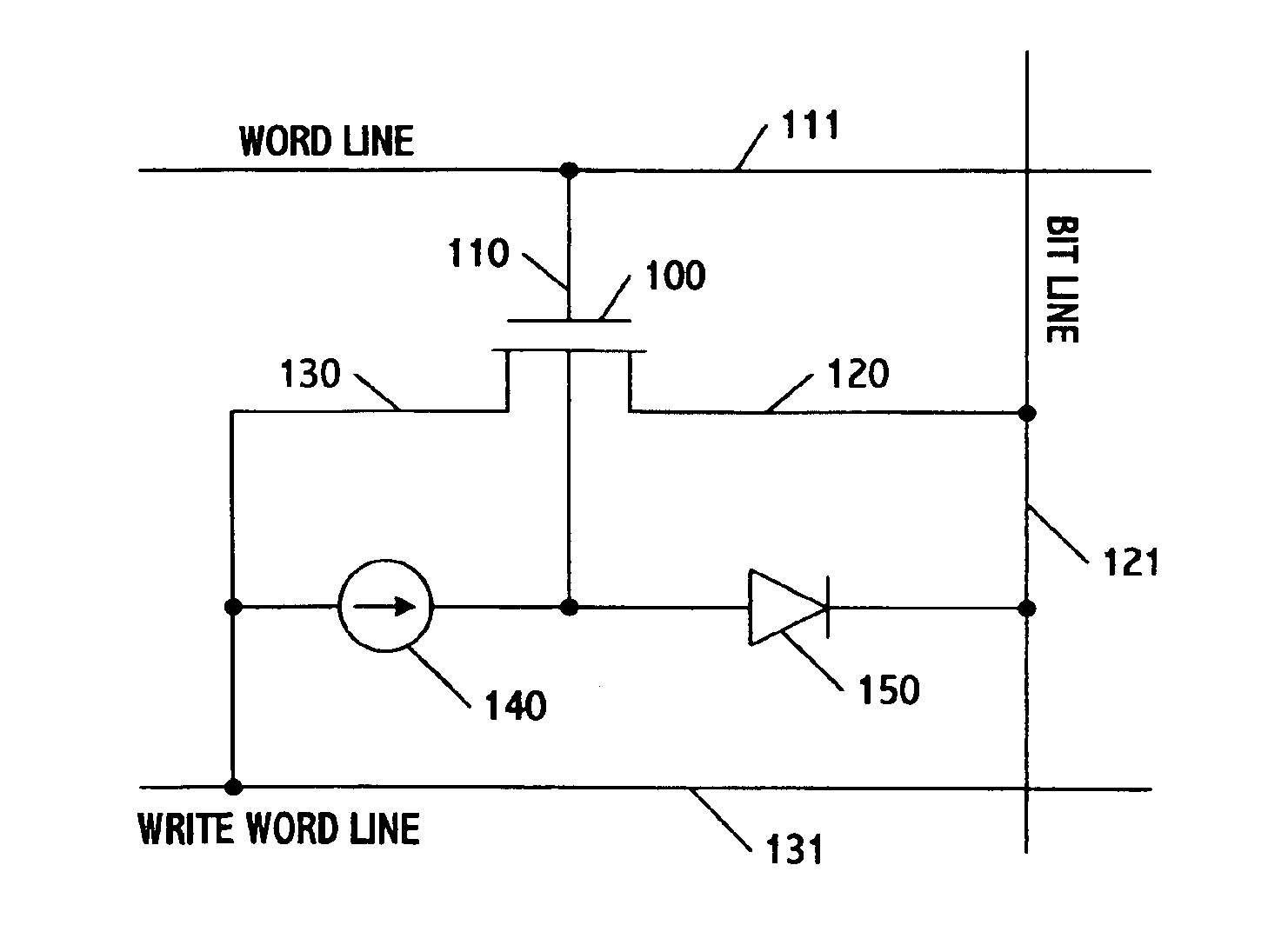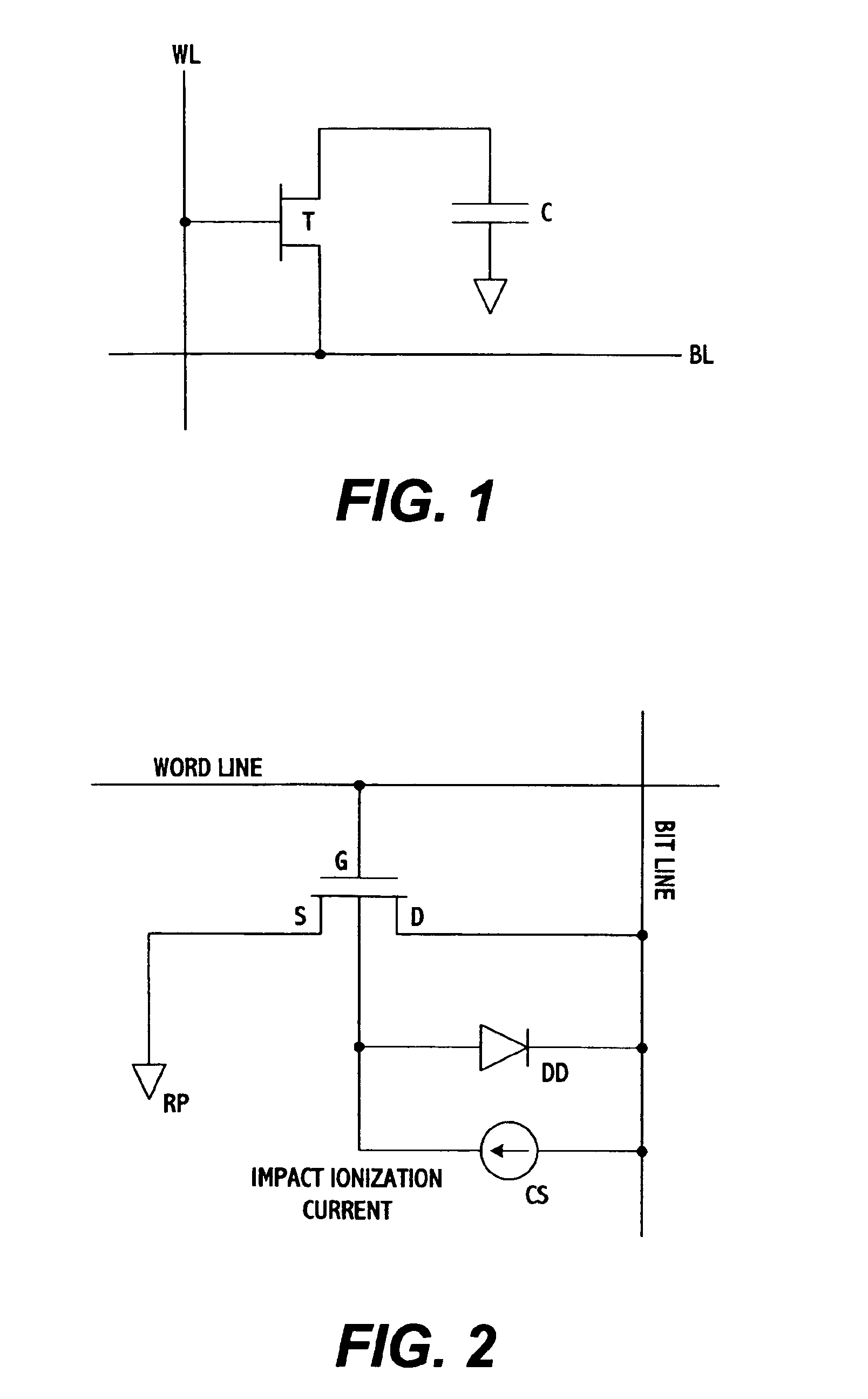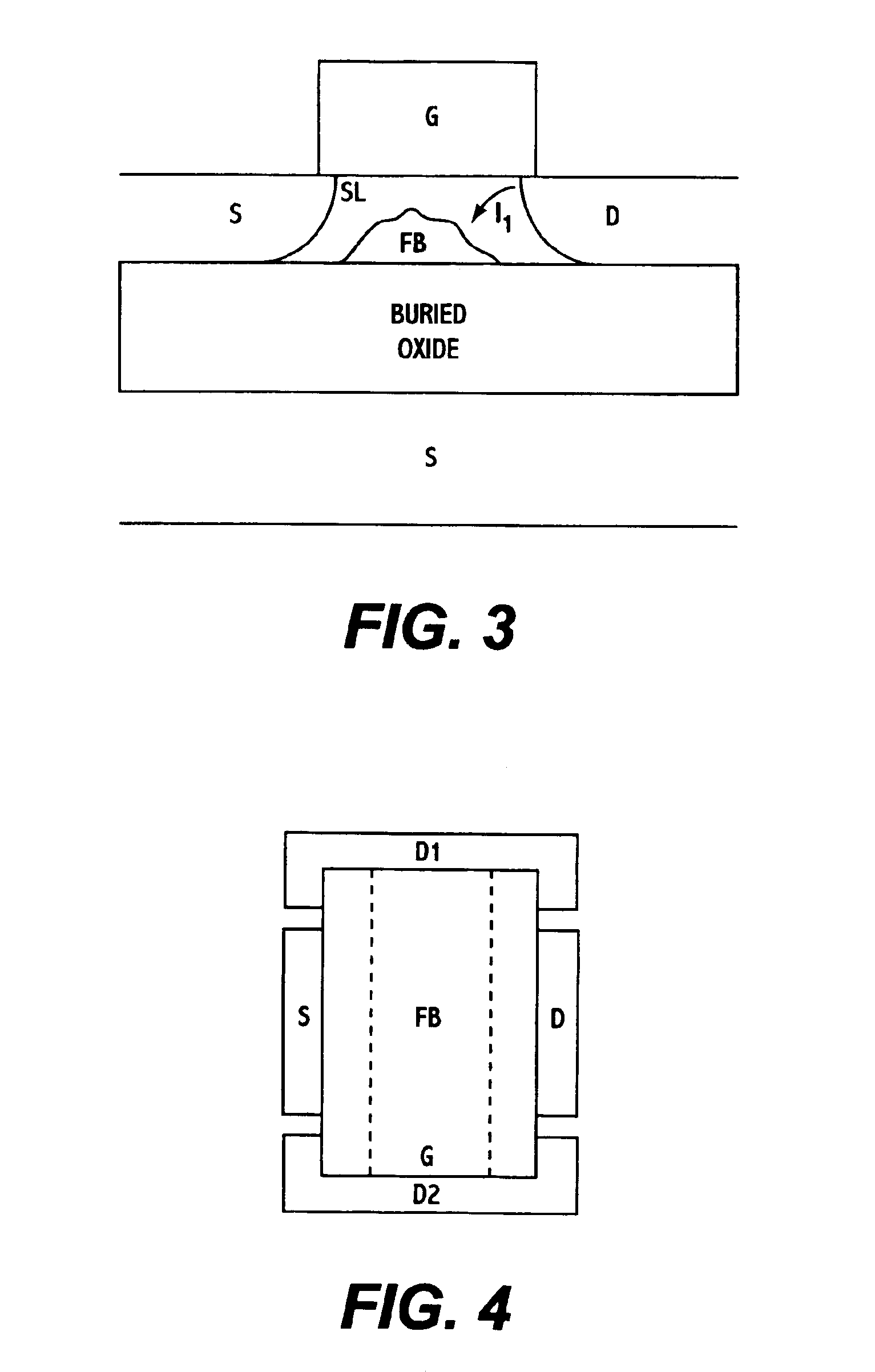Floating-body DRAM using write word line for increased retention time
a floating-body dram and memory cell technology, applied in the field of memory circuits, can solve the problems of low memory cell density, significant limitation of the performance of the microprocessor system, and die spa
- Summary
- Abstract
- Description
- Claims
- Application Information
AI Technical Summary
Problems solved by technology
Method used
Image
Examples
Embodiment Construction
[0024]FIG. 2 is a diagram showing a first type of DRAM gain cell having a floating-body structure. The cell is formed from a single transistor having a source S connected to a reference potential RP (e.g., ground), a drain D connected to a bit line, and a gate G connected to a word line. A diode DD is provided to show a direction in which the drain junction is forward biased during a write ′0″ operation, and a current source CS is provided to show the direction in which impact ionization current flows when the transistor operates in a saturated operating region (i.e., when the drain voltage is greater than the gate voltage minus the threshold voltage, Vg−VT) during a write ′1″ operation. As will become more apparent below, DD and CS are inherent to the transistor structure and are shown in FIG. 2 for explanatory purposes only.
[0025]The transistor has an silicon-on-insulator (SOI) structure which, as shown in FIG. 3, includes an insulating layer (e.g., SiO2) formed on a silicon subst...
PUM
 Login to View More
Login to View More Abstract
Description
Claims
Application Information
 Login to View More
Login to View More - R&D
- Intellectual Property
- Life Sciences
- Materials
- Tech Scout
- Unparalleled Data Quality
- Higher Quality Content
- 60% Fewer Hallucinations
Browse by: Latest US Patents, China's latest patents, Technical Efficacy Thesaurus, Application Domain, Technology Topic, Popular Technical Reports.
© 2025 PatSnap. All rights reserved.Legal|Privacy policy|Modern Slavery Act Transparency Statement|Sitemap|About US| Contact US: help@patsnap.com



